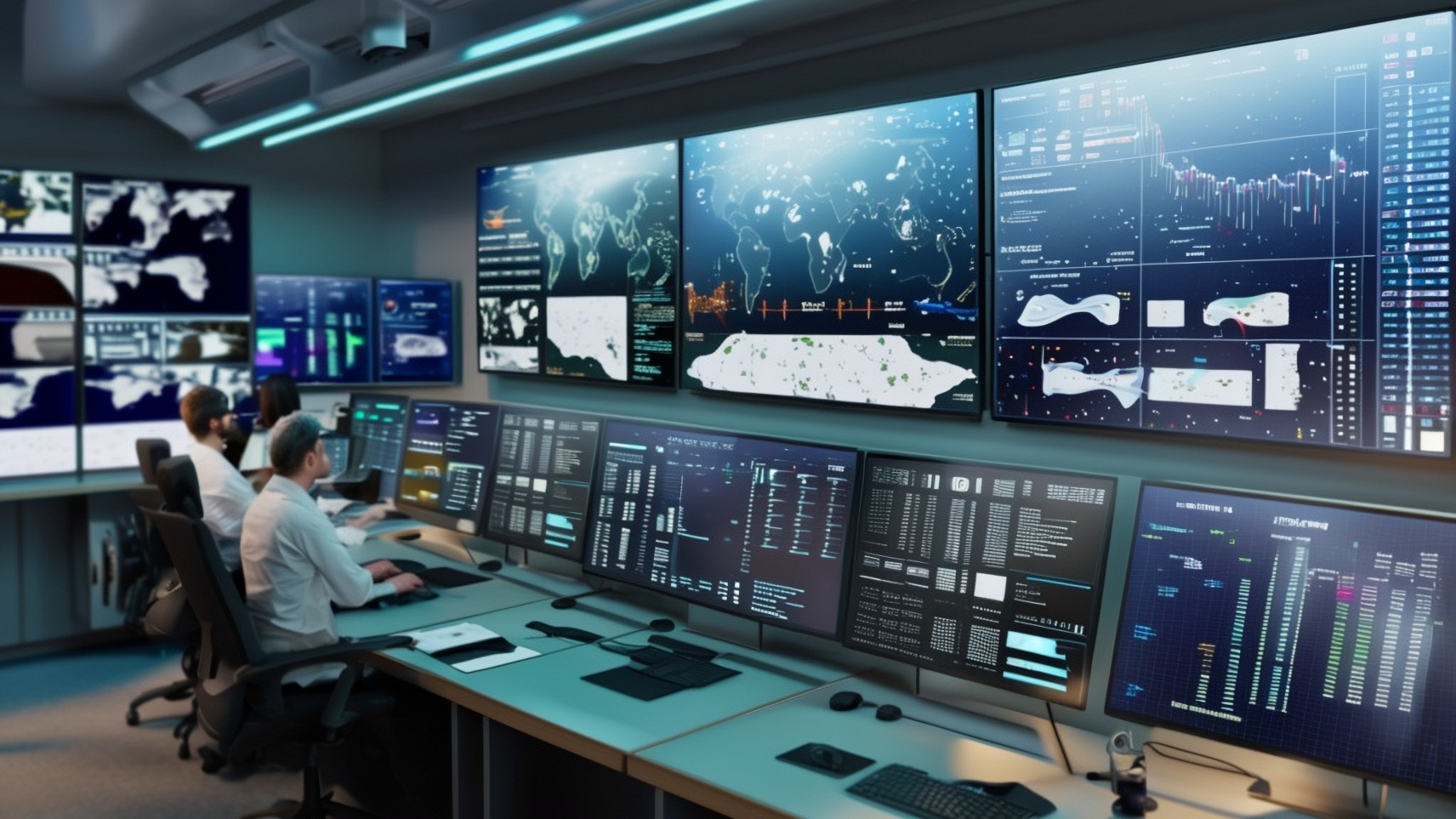The maritime industry has never lacked data. Fuel logs, voyage plans, weather reports, incident logs – operators have long collected information to inform strategy and planning. But as shipping navigates an increasingly dynamic and regulated environment, the real question is no longer about collecting data. It’s about using it – now, not later.
Today’s bridge teams are under immense pressure. Traffic density is rising in major sea lanes. Regulations like FuelEU Maritime and the IMO’s Carbon Intensity Index (CII) demand precise tracking. Crews are leaner and ships operate with fewer personnel responsible for more complex systems. These realities are creating a new operational imperative: decisions must be faster, more accurate and safer than ever before.
Enter real-time decision-support platforms like Orca AI (featuring the SeaPod digital watchkeeper and FleetView application for shore offices) that don’t just record what has happened – they help crews and shore teams make smarter decisions while things are happening. Such real-time decision-support platforms are transforming maritime operations by replacing reactive, post-voyage analysis with live, in-voyage optimization.
This article explores how AI-driven systems enable both bridge crews and shoreside teams to make faster, smarter decisions based on continuously updated data. It also addresses the limitations of legacy practices like manual noon reports, which still prevail in over 70% of the global fleet, and explains how platforms like Orca AI offer continuous performance monitoring, predictive risk detection, emissions tracking and smarter compliance. From ESG gains to reduced workload and enhanced safety, this technology represents the new standard in operational intelligence.
The old model: historical data in a real-time world
For years, maritime digitalization focused on capturing historical data. Operators collected parameters including fuel consumption logs, maintenance reports, weather anomalies, near-miss incidents and route deviations. While invaluable for long-term trend analysis, these datasets offered little help when crews needed to make rapid decisions in complex, fast-changing scenarios.
Traditional platforms were siloed. Data collected on board was often processed post-voyage or reviewed intermittently by shore-based operations teams. Feedback loops were slow and insights arrived after the fact. For example, a vessel might receive emissions performance feedback weeks after arrival – too late to influence operational behaviour during the voyage itself.
This gap between information and execution has real-world consequences. In high-congestion ports or ecologically sensitive regions, delays in situational awareness can increase collision risk, emissions violations or even risk of detention. Crews remain reactive rather than adaptive.
As maritime operations generate ever-larger datasets, the old approach has become unsustainable. The challenge is no longer access to data – it’s the ability to act on it in real time.
Despite the rise of digital tools, many vessels still rely on outdated methods like once-daily noon reports to capture performance metrics. According to a recent joint report by Thetius and Danelec, over 70% of ships still rely on once-daily noon reports to track performance metrics like fuel consumption and voyage status – a static, manual practice that limits insight on how to improve performance.
The emergence of real-time operational platforms
The limitations of the legacy model have prompted a shift to platforms that are not only aware of what is happening but can offer on-the-fly interpretation and support immediate decisions. Real-time maritime operations now depend on systems that consolidate and contextualise live data from Radar, cameras (day and thermal), AIS, critical equipment sensors and environmental feeds.
Real-time platforms like Orca AI are enabling this transition. FleetView and SeaPod continuously process incoming data, applying AI models to detect anomalies, anticipate risks and guide crews proactively. The platform shares this intelligence simultaneously with the bridge and shoreside teams via secure cloud-based dashboards, enabling dynamic coordination.
This shift – from “data collection” to “data action” – marks a fundamental turning point in maritime automation and safety. Instead of using data to reflect on the past, real-time maritime platforms enable better outcomes in the present, bridging the gap between insight and execution.
Related: Unlocking safer seas – the core capabilities of situational awareness systems
Historical versus real time: a comparative framework
To appreciate the operational shift, it’s worth comparing historical data systems and real-time maritime platforms across key performance indicators:
| Historical systems | Real-time + AI platforms (e.g. Orca AI) | |
| Decision speed | Post-voyage | In-voyage, adaptive |
| Use case | Compliance, audits, trend review | Route adjustments, incident avoidance, bridge support |
| Crew support | Indirect, retrospective | Direct alerts, live operational clarity |
| Data sharing | Delayed, siloed | Cloud-based, ship-to-shore integrated |
| Weather routing | Pre-voyage, static | Dynamic, traffic-aware |
| Human involvement | Manual reports | Human-in-the-loop, AI-assisted |
The implications are profound. Instead of relying on crew to interpret disparate systems manually, decision support is embedded within the workflow providing prioritized alerts, traffic cues and predictive recommendations when they matter most.
Consolidated data as a catalyst for digital transformation
Disparate systems and siloed data have long been a bottleneck in shipping. Real-time decision-support platforms change that by unifying data streams across the vessel into a single operational picture – one that can be interpreted, shared and acted upon by both bridge officers and headquarters.
This consolidation makes data analytics in the maritime industry not only possible but scalable. As the volume of information grows exponentially, AI tools are essential to extract insights without overwhelming seafarers. In this sense, every real-time platform becomes a big data-analytics engine – detecting patterns, filtering noise and surfacing what matters.
It also empowers proactive compliance. With consolidated emissions, speed and location data, companies can align with EU ETS and CII mandates without relying on error-prone manual logs or end-of-voyage reports.
Related: When good gets better – from voyage planning to maritime route optimisation
Beyond the bridge: AI’s expanding role in maritime digitalization
While situational awareness has been the initial focus of many AI deployments at sea, it is only the beginning. The same real-time data infrastructure and algorithms that enhance bridge safety are now being extended to support broader vessel-wide digitalization.
AI and data analytics are increasingly being used to:
- Predict machinery failure through vibration patterns and engine temperature analysis
- Optimise fuel consumption by dynamically adjusting engine load and route profiles
- Monitor emissions and compliance with EU ETS, CII and other regulatory benchmarks in real time
- Automate reporting on port arrival, departure and cargo handling performance
This evolution reflects a deeper shift, from fragmented systems and delayed insights to cohesive, insight-driven operations. Orca AI is building toward a future where real-time decision intelligence spans every aspect of shipboard activity – from propulsion to port interface – ensuring that data becomes not just a log of what happened, but a live operational asset.
Strategic outcomes enabled by Orca AI
Real-time maritime decision support doesn’t just improve operations, it drives measurable business value across key areas:
1. Digitalisation and decision making
As a prime example, Orca AI’s FleetView and SeaPod convert passive data into active guidance. Alerts, annotations and predictive models help navigators maintain situational awareness while HQ can monitor and support from afar – especially critical in congested routes or during low-visibility operations. But the impact doesn’t stop at the bridge. These platforms are increasingly part of a wider digital ecosystem, supporting broader transformation efforts across the vessel. From AI-driven engine performance monitoring and predictive maintenance to dynamic voyage optimization and fleetwide analytics, Orca AI is helping operators move from siloed systems to cohesive, insight-driven digitally enhanced operations.
2. Operational efficiency
By offloading repetitive monitoring tasks to AI, bridge teams can focus on higher-value decisions. Shore teams gain real-time oversight without interrupting workflows. The result is faster reaction times, smoother communication and reduced workload/fatigue.
3. ESG and emissions reduction
Dynamic route and speed optimisation reduces fuel use and cuts emissions. AI supports navigation choices that minimize idle time, avoid unnecessary course changes and reduce wear-and-tear – contributing to more sustainable shipping.
4. Data-driven compliance
Integrated data capture across operational domains allows for automated reporting aligned with CII and FuelEU Maritime requirements. Real-time visibility means potential non-compliances can be addressed before they become violations.
Related: Orca AI collision avoidance solutions
Operational impact and ROI
The business case for real-time platforms is compelling.
Fewer collisions and near-misses mean lower insurance premiums, less downtime and stronger defensibility in case of investigation. Crews supported by AI make faster and more confident decisions, enhancing both safety and performance. Shore teams gain a live overview of fleet status, enabling smarter allocation of assistance, maintenance and routing.
Fuel savings alone can generate a rapid ROI. Optimized voyages reduce engine strain, extend service intervals and support corporate decarbonization strategies. From emissions tracking to route resilience, real-time maritime operations translate directly into operational excellence.
Implementation considerations
Deploying real-time platforms at scale requires thoughtful planning across technical, cultural and organizational dimensions.
Technical: Legacy system integration remains a critical challenge, especially in mixed fleets. Bandwidth limitations and inconsistent satellite coverage can also affect real-time platform reliability. Operators must assess the interoperability of bridge equipment and plan for scalable connectivity.
Cultural: Crews must trust that DSS enhances rather than replaces their expertise. Poor UI design, excessive alerts, or ambiguous recommendations can create resistance. Interfaces must be intuitive, and feedback loops should reinforce human decision-making rather than undermine it.
Organizational: Bridge-side and shore-side workflows must be aligned. Real-time platforms require new standard operating procedures (SOPs), escalation paths and training regimens to ensure consistent use across operations teams. Consistency breeds confidence – both in the system and its users.
Cybersecurity and compliance: Platforms must be designed with regulatory alignment (e.g. the NIS 2 directive specifying cybersecurity measures for companies that provide essential or important services or activities in the EU) and data security at their core. As maritime operations digitalize, cybersecurity is no longer optional, it’s foundational.
Challenges and barriers to adoption
Despite the promise of these advanced platforms, adoption is not automatic.
Many seafarers are accustomed to manual processes and may initially resist new systems. There is often a misconception that real-time decision support reduces autonomy or invites liability. In truth, it empowers crews by surfacing information they already rely on – but faster, more accurately and without distraction.
Training is key. AI recommendations must be transparent and explainable. Crews should feel in control and know when to override. This calls for phased onboarding, clear policy frameworks and consistent leadership support. Human-in-the-loop design is not a nice-to-have, it’s essential to build trust and ensure safety.
Conclusion: A smarter, safer, more agile fleet
The shift from static reporting to live operational support is more than a tech trend, it’s a structural evolution in how maritime decisions are made.
Orca AI is contributing to this transformation – not just by providing visibility tools but by delivering full-spectrum decision intelligence for both ship and shore personnel. These platforms signal a new approach to seamanship – one that is augmented by AI, anchored in trust and tuned for a more demanding environment.
Orca AI’s vision goes beyond safe navigation. By anchoring real-time data and AI in everyday decisions – whether on the bridge, in the engine room or at HQ – the company is a key enabler of maritime digitalization. From bridge safety to fleetwide optimization, Orca AI helps operators move from fragmented tools to fully connected decision ecosystems.
In an industry where every second counts, real-time operations offer a competitive edge. But more importantly, they offer a path toward safer, cleaner and more agile shipping – where insight drives action, not after the fact, but exactly when it matters.









